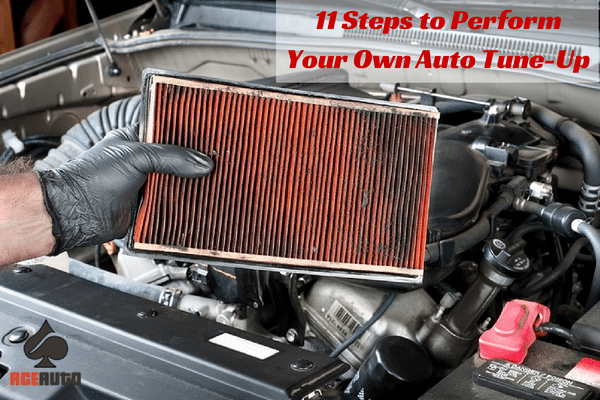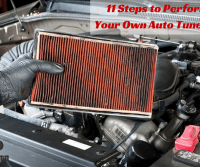
Give your car this 11 step tune-up at least once annually to keep it in peak operating condition. By performing this type of regular maintenance, you’ll be able to catch problems before they leave you stranded on the highway.
- Give your car a basic checkup – Before you get started with a serious tune-up, give your car a visual inspection, inside and out. Look for any damage or signs of trouble.
- Check oil & fluids – Add any oil and replace it if necessary. Check brake fluid, coolant, transmission fluid, etc. Fluid that is dirty or low may need to be replaced or topped off. If your brake fluid is low, this could be a sign of a bigger problem.
- Check tire tread – Check the tire tread for signs of wear. Tire siping may be a good option if you can't afford a whole new set of tires.
- Check battery for corrosion – Corrosion makes it harder for your car to connect to the battery. Check your battery for corrosion and clean it off wherever appropriate.
- Check turn signals, headlights, running lights & brake lights – This is easy enough. Simply turn on your car and ask a partner to walk around the vehicle while you flash all the lights. Replace any burned out light bulbs.
- Change the oil – If you’re not sure how to change the oil in your car, Edmunds.com has a very helpful tutorial that outlines the entire procedure, with pictures for each step. Don’t forget to properly dispose of the oil when you’re done.
- Check/replace air filter – Replacing a dirty air filter can improve your engine performance and gas mileage. Perform a visual inspection and check your air filter for dirt and debris. Replace the air filter if necessary.
- Check/replace wiper blades – Poorly functioning wiper blades can make it dangerous to drive in inclement weather. To check the functioning of your wiper blades, hose your car with a light mist then turn on the windshield wipers. Replace the blades as necessary.
- Check/replace belts – Look for tears, cracks and abrasions on the belts in your car, including the serptentine belt, power steering belt and the alternator belt. Although some wear and tear is to be expected, a belt that shows significant degradation may be at the end of its lifespan and should be replaced.
- Check/replace spark plugs – Spark plugs last anywhere from 10,000 to 60,000 miles. Inspect the rubber insulation around each spark plug, and inspect the wire itself for cracks. Replace any spark plugs that show sign of damage.
- Still having problems? Take it to a specialist. Even the most die-hard DIY car owner still needs to visit a mechanic once in a while. Take your car to Ace Auto Repair, where you can trust to get your car up and running for a price you can fford. Visit Ace Auto online to fill out a free quote form or to make an auto repair appointment.


Recent Comments